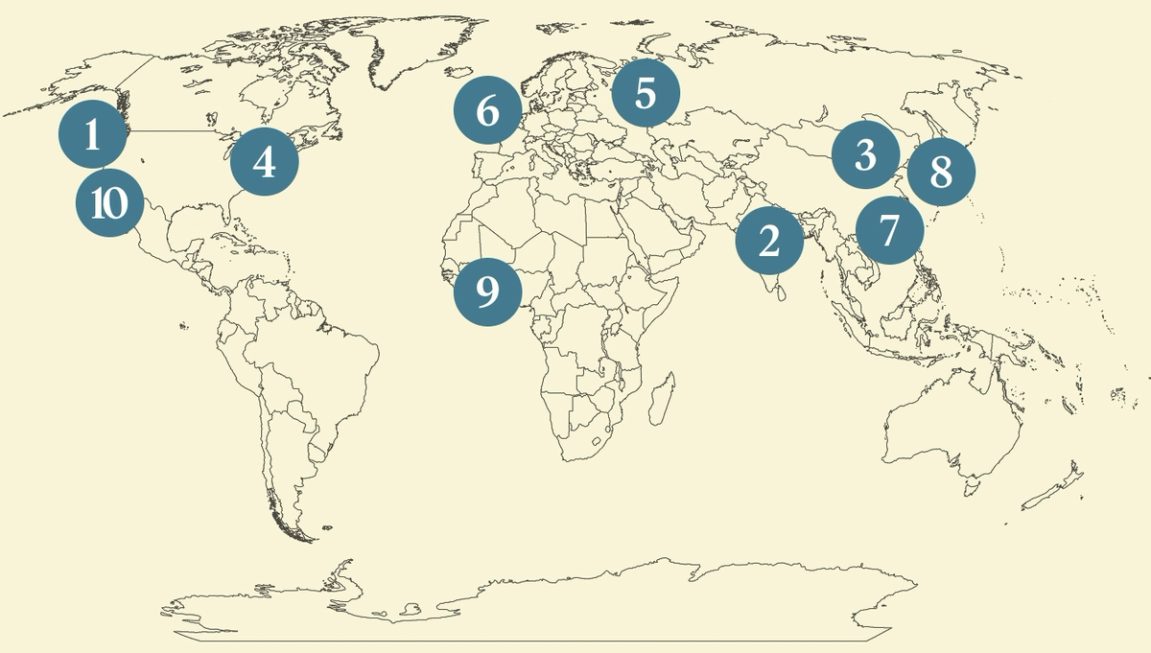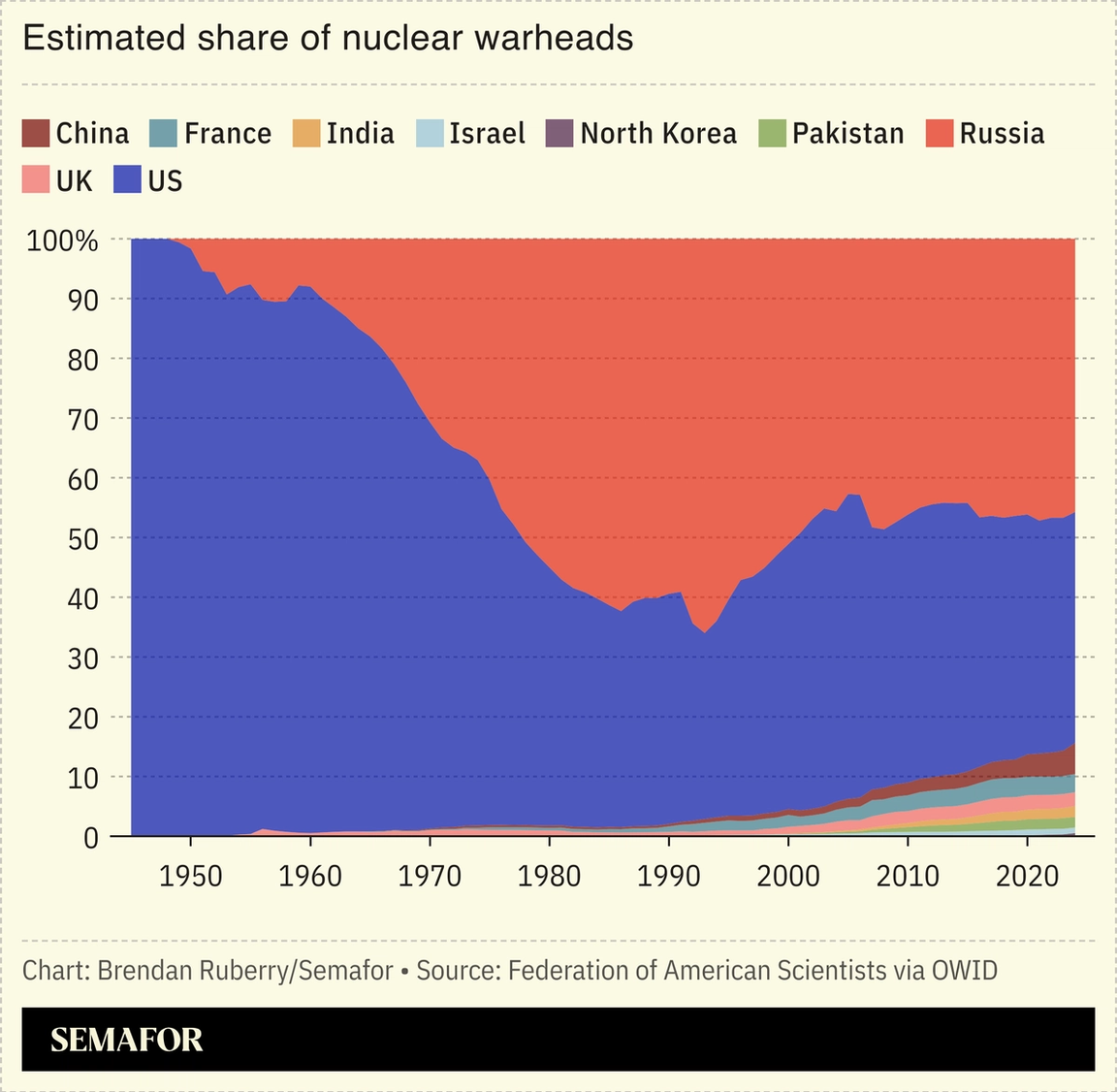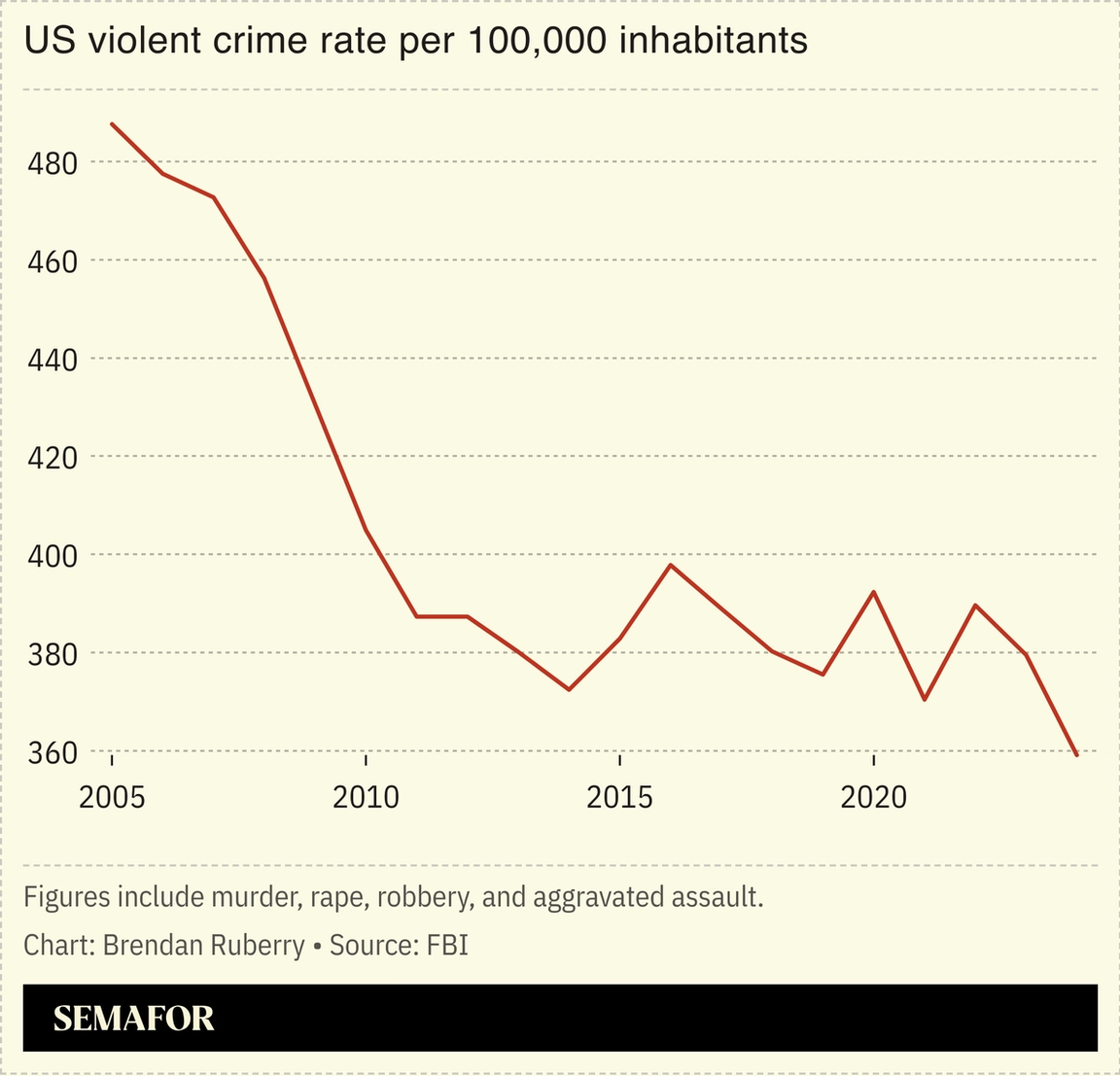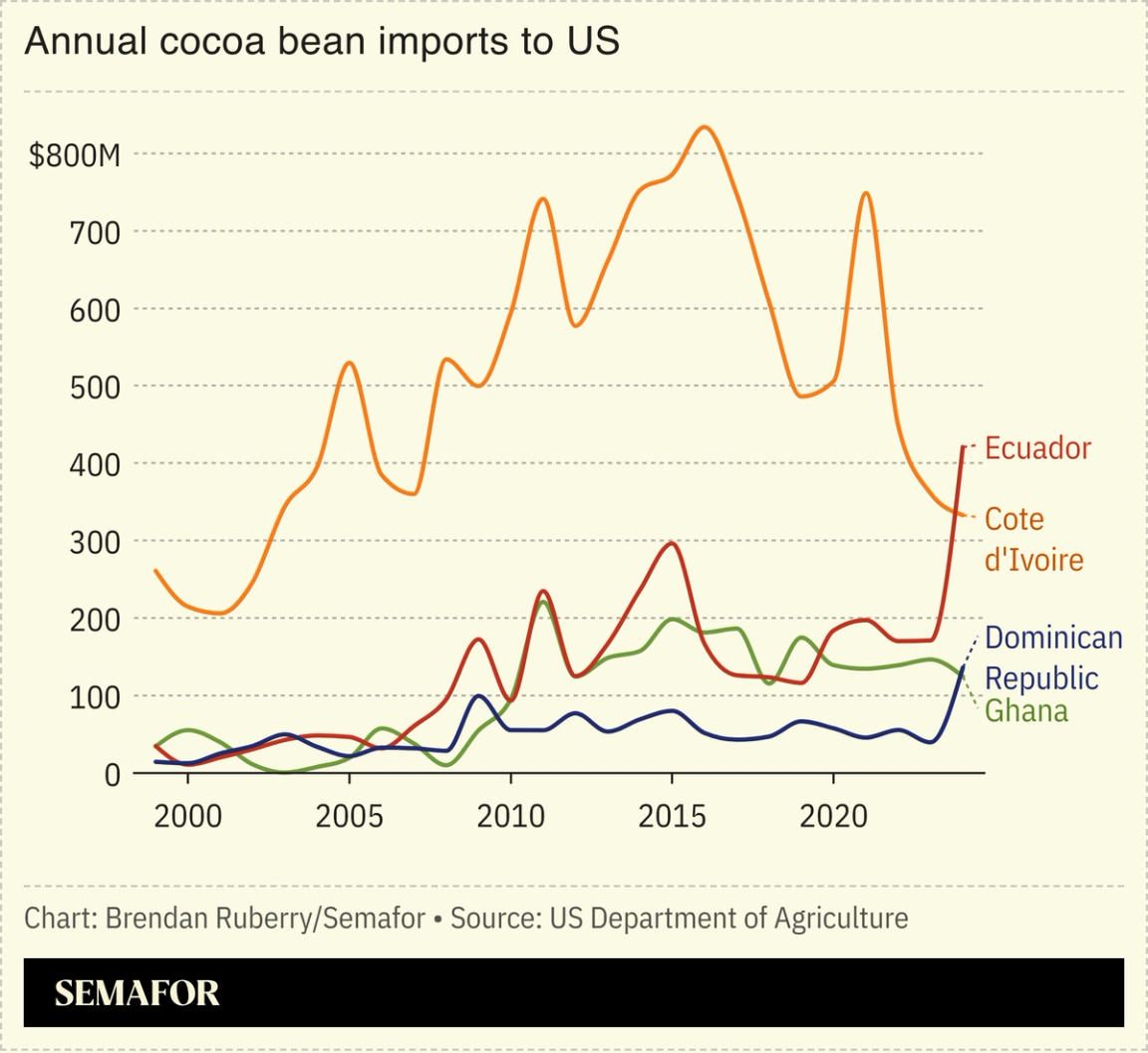| | Donald Trump hikes tariffs on India over its Russian oil purchases, Apple announces more investments͏ ͏ ͏ ͏ ͏ ͏ |
| |   CHENGDU CHENGDU |   Puerto Princesa Puerto Princesa |   NEW DELHI NEW DELHI |
 | Flagship |  |
| |
|
The World Today |  - Apple’s US investment
- Trump hikes India tariffs
- Modest India-China détente
- What economy are we in?
- Nuclear pacts ending
- Non-existent crime wave
- AI-powered information wars
- Debate over AI education
- Gene editing for chocolates
- Hollywood out of ideas
 Art lovers have a chance to view Keir Starmer’s curated collection — but don’t expect to see the Iron Lady. |
|
Apple pledges another $100B in the US |
 Jonathan Ernst/Reuters Jonathan Ernst/ReutersApple will invest an additional $100 billion in US manufacturing, President Donald Trump announced Wednesday alongside the tech giant’s CEO Tim Cook. The commitment, the latest corporate move to placate Washington in the face of tariff threats, follows Apple’s $500 billion pledge earlier this year, and could “soften the White House’s ire” over the company’s reliance on imports from India, Bloomberg analysts said. Trump has been pressuring firms to reduce reliance on foreign countries, and Apple’s latest investment includes the launch of an “American Manufacturing Program” aimed at reshoring parts of its supply chain. But even as Trump hails investment commitments from companies and trade partners, experts say comprehensive factory relocations aren’t feasible. |
|
Trump hits India with another 25% tariff |
 Ken Cedeno/Reuters Ken Cedeno/ReutersUS President Donald Trump on Wednesday hiked tariffs on India to 50% over its purchase of Russian oil, ratcheting up tensions with the world’s most populous nation. While other governments rushed to make concessions in the face of Trump’s tariff onslaught, India has refused to stop buying Russian oil, largely because it has no easy substitute for the 2 million barrels a day it gets from Moscow, the Financial Times wrote. Washington’s play is aimed at pressuring Russia to end the Ukraine war, and Trump reportedly intends to meet with Vladimir Putin as soon as next week. But even if India scales back imports of Russian oil, Moscow could still gain revenue if crude prices spike, experts say. |
|
India modestly warms to China |
|
The multiple US economies |
 Spencer Platt/Getty Images Spencer Platt/Getty ImagesThe US economy is moving in different directions, creating, in essence, multiple economies, experts wrote. A recent slew of economic data offered mixed signals in what has become a partisan Rorschach test, Semafor wrote recently. Stocks are rising and artificial intelligence investment is booming. Yet vulnerabilities in the labor market and consumption appear to be deepening. “If you have a job, you’re probably pretty OK. If you’re looking for one, you’re having a really tough time,” a Wall Street Journal reporter wrote. One analyst, writing in Bloomberg’s Odd Lots newsletter, tallied “three economies”: a contracting housing market, sluggish consumers, and AI-related growth. “Given how strong the financial markets have been,” he wrote, “the US economy is innocent until proven guilty.” |
|
New nuclear fears as US-Russia pacts end |
 The end of US-Russia nuclear arms pacts reflects a more volatile and antagonistic world order, analysts argued on the 80th anniversary of Washington’s atomic bombings of Hiroshima. Moscow on Tuesday ended its self-imposed moratorium on deploying certain nuclear-capable missiles, and has only one remaining agreement with Washington, due to expire next year. “A new nuclear era is dawning,” The Economist wrote, with the breakdown of the “arms-control architecture of the cold war.” The end of treaties doesn’t necessarily herald nuclear war, but “it certainly doesn’t make it less likely,” one expert said. The true power of the weapons, however, lies in their capacity to “be used by nuclear-armed states to manoeuvre and protect their political power,” a scholar wrote in The Conversation. |
|
US crime is down, but people don’t buy it |
 Violent crime is down in the US and UK, but public perceptions of crime are up in both countries. The economist Paul Krugman argued that in the US, Republicans are hyping up a “nonexistent crime wave” to drum up fears of immigration, although as the Financial Times’ John Burn-Murdoch noted, that while dangerous crimes are now rarer, visible offenses such such as shoplifting or phone snatching are up. The public correctly believes it is in less physical danger, but has a sense of degradation of public order. A UK policy writer argued that people’s “experience” of crime and the police’s response to it is “far worse” than what the low crime numbers reflect. |
|
China’s AI-driven propaganda |
 Fang Jianfei/VCG via Getty Images Fang Jianfei/VCG via Getty ImagesChina is using artificial intelligence to power propaganda campaigns, new research suggests. GoLaxy, a company with connections to the Chinese government, can monitor certain individuals and their arguments, and track public sentiment. The technology has been used in influence operations in Hong Kong and Taiwan, and has collected data on US lawmakers and other influential Americans — though the firm hasn’t mounted a campaign in the US, according to documents reviewed by The New York Times. China’s information warfare has lagged behind Russia’s, but Beijing’s embrace of AI could help it catch up. AI-driven propaganda “is no longer a hypothetical future threat,” the researchers who uncovered the documents argued. “It is operational, sophisticated and already reshaping how public opinion can be manipulated.” |
|
 The next wave of global growth starts here. Against the backdrop of the UN General Assembly, Semafor will host a landmark gathering on one of the greatest social and economic opportunities of our time: connecting the unconnected. The Next 3 Billion will explore the forces accelerating economic and societal growth across the world’s most ascendant regions. Join world leaders, top executives from the world’s most powerful companies, and leading investors in the region for a full day of dialogue on connecting the next three billion people to the digital economy.
|
|
Divergent approaches to AI education |
 Carmen Jaspersen/picture alliance via Getty Images Carmen Jaspersen/picture alliance via Getty ImagesCountries are taking divergent approaches to artificial intelligence in the classroom. Google on Wednesday announced a $1 billion program to provide AI training and tools to US colleges, including free chatbot access. Chinese universities are leaning more heavily into the advanced tech, “treating it as a skill to be mastered” and a source of national pride, MIT Technology Review wrote: Some schools are requiring introductory AI courses, regardless of major. In South Korea, though, lawmakers this week passed a bill stripping AI-powered textbooks of their legal status as official teaching materials, reversing a push by the previous government to personalize education using the tech. The project had sparked backlash from educators and parents who worried about children’s high digital exposure. |
|
M&M’s maker embraces gene editing |
 Candy giant Mars, maker of M&M’s and Snickers, is betting on gene editing to create a hardier cocoa plant as the global cocoa supply tightens. The company reached an agreement to access a biotech firm’s gene-editing tools: CRISPR enables the direct editing of a plant’s genes to introduce desired traits, and has yielded more vitamin-rich tomatoes and bananas that turn brown more slowly. West Africa, which produces a majority of the world’s cocoa, is seeing weaker harvests owing to disease and climate change. Threats to food production have also led Europe to ease regulations around gene-edited plants, but critics fear the prevalence of such crops could concentrate agriculture power within a small group of biotech firms. |
|
|